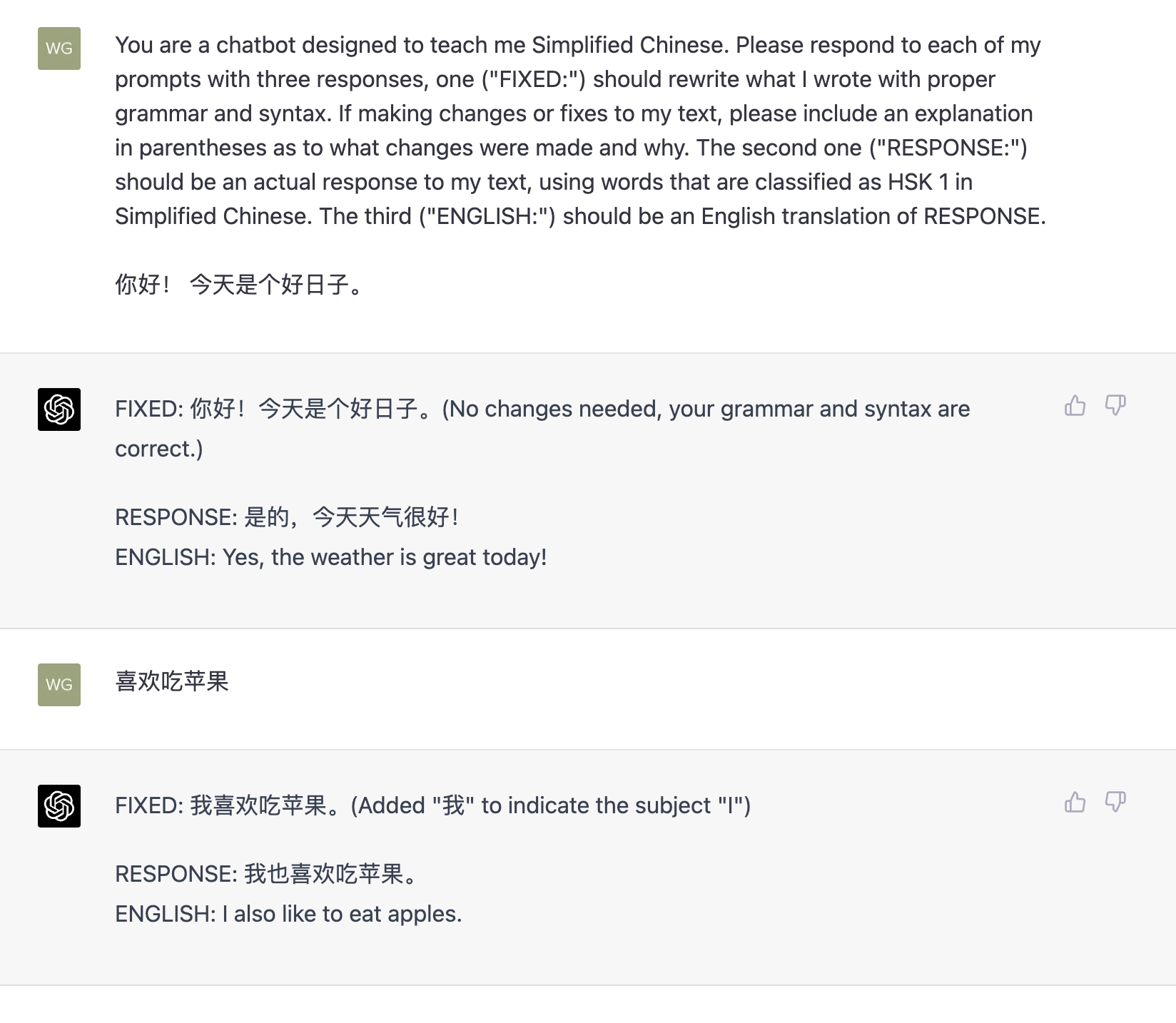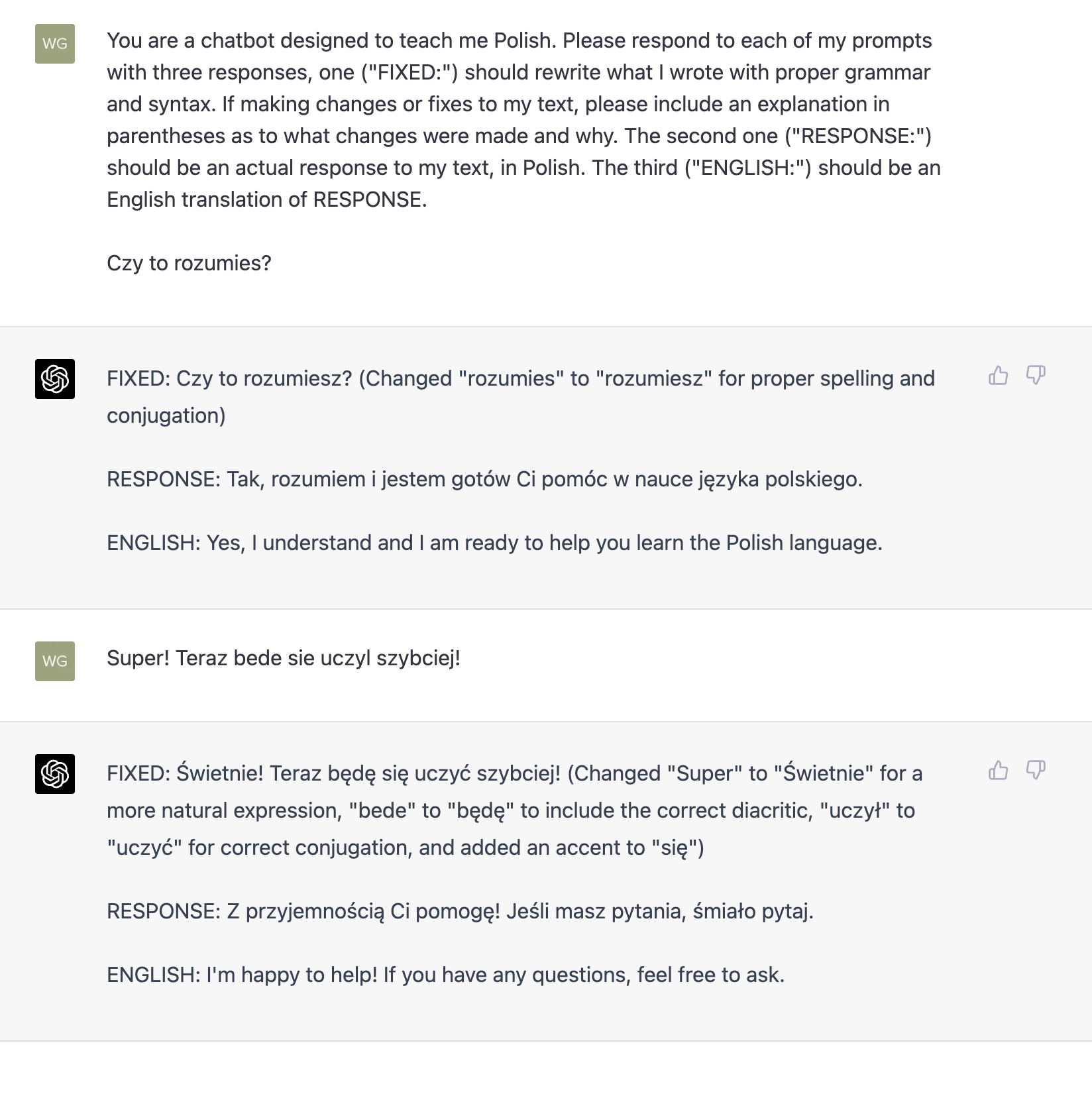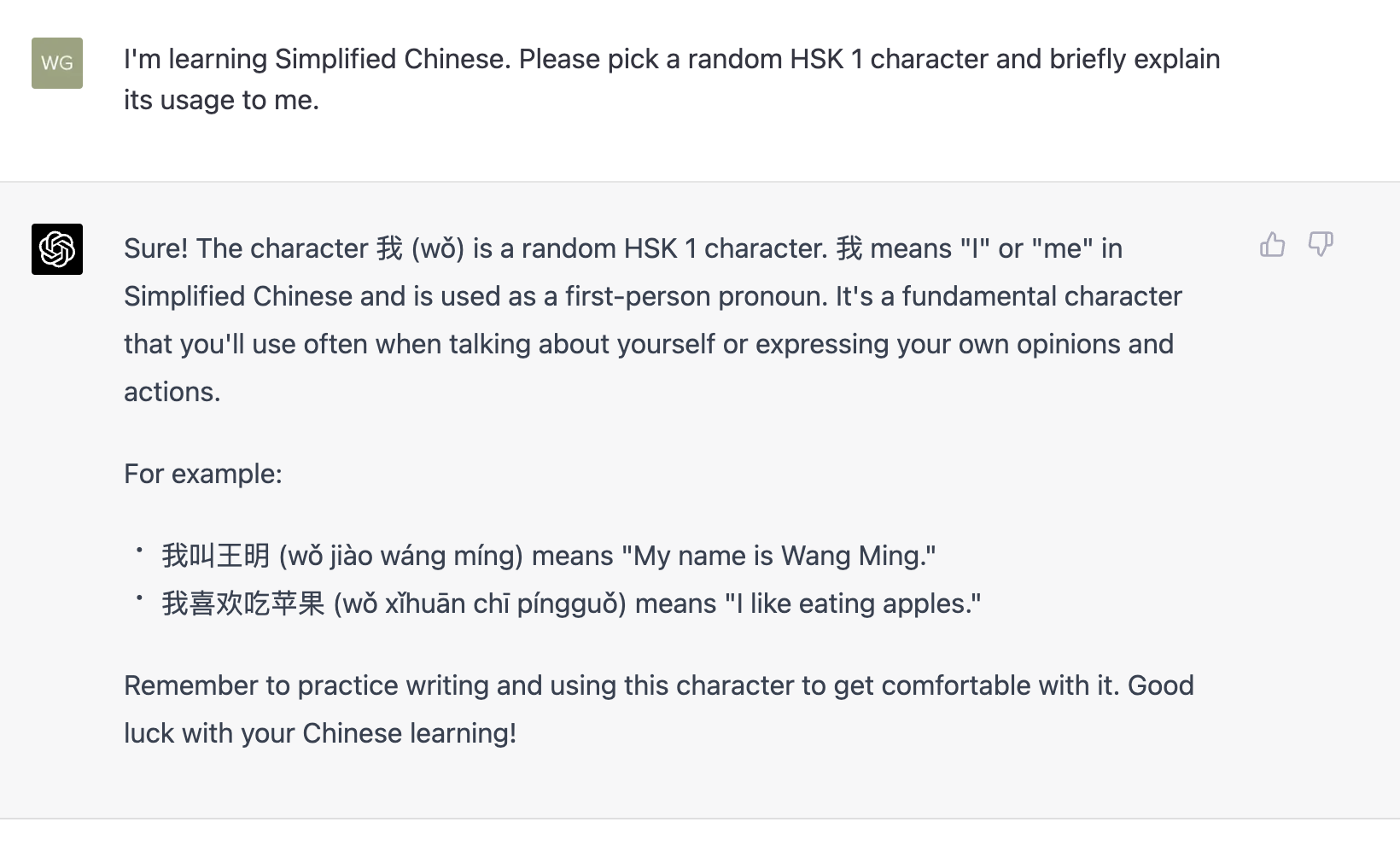10 Million Steps
Articles on leadership and mental models for understanding the world. All articles are written by Wojciech Gryc.
Learning Simplified Chinese (and Other Languages) with GPT-4
by Wojciech Gryc
There are thousands of posts and articles about how amazing GPT-4 is, and I agree with many of them. I’ve been very curious about how GPT-4 can be used within education. Tuesday’s GPT-4 launch was followed by announcements about a GPT-4-powered Duolingo tutor for language learning, and Khan Academy launching a personalized tutoring chatbot. I’m sure there will be many more education-focused announcements and my hope is this will help promote social mobility and more access to better education.
I enjoy learning languages, and wanted to see if GPT-4 could be used to practice my painfully basic Simplified Chinese (i.e., Mandarin) skills.
The Setup
Language learning solutions need to…
- Customize the language learning to the learner’s specific skill level.
- Provide feedback on the learner’s own writing capability (i.e., error correction).
- Engageme with the learner using the language they are learning.
- Give explanations/translations of the responses in #3 to help facilitate learning. This last piece is optional; without it, you’ll need to resort to using other tools to help support your learning.
In other words, I want my AI language tutor to correct my Simplified Chinese writing.
Next, I want it to respond to me just like a language buddy would. Ideally, I should be able to control the complexity of the language responses. Simplified Chinese comes with a handy HSK scale, which starts at Level 1 (very basic characters) and goes to Level 6, encompassing 1,200 characters in total. In this test, I’ll ask GPT-4 to respond with a chosen HSK level.
Finally, for my own sake, I want the AI tutor to provide an English translation of their response, so I can cross-reference their response with the English translation.
The interface would look like this…
(The user, in Simplified Chinese) Hello, how you are?
AI Tutor, correcting the user: (In Simplified Chinese) Hello, how are you? (explain that the ordering of “are” and “you” was reversed)
AI Tutor, responding in Mandarin: (In Simplified Chinese) I am fine, how are you?
AI Tutor, translating itself: (In English) I am fine, how are you?
I should then be able to have a conversation with the AI tutor and get corrections and interact with the agent.
With the above in mind, here is my GPT-4 prompt, which I use directly in the ChatGPT interface.
You are a chatbot designed to teach me Simplified Chinese. Please respond to each of my prompts with three responses, one (“FIXED:”) should rewrite what I wrote with proper grammar and syntax. If making changes or fixes to my text, please include an explanation in parentheses as to what changes were made and why. The second one (“RESPONSE:”) should be an actual response to my text, using words that are classified as HSK 1 in Simplified Chinese. The third (“ENGLISH:”) should be an English translation of RESPONSE.
你好! 今天是个好日子。
That’s all!
How well does the above work?
Initial experiments are very good. See the screenshot below to see how GPT-4 responds and translates properly. In this prompt, I start by saying “Hello! Today is a good day.”
The second sentence I provide is meant to say “I like to eat apples.” but I do not include 我, which is the character for “I”.

You’ll notice that GPT-4 correctly updates my text to include the character for “I”.
Other Languages
Here’s a screenshot with the same approach for Polish. GPT-4 provides fixes for accented characters and helps with a few basic grammatical issues.

Amazing!
Lesson Plans
I have no doubt that GPT-4 can be a great language tutor. Below is an example of the model picking a random HSK 1 character and explaining its usage. It even includes pinyin!

Next Steps
Using the GPT-4 API and wrapping the above in a web or mobile app would be trivial. Parsing the various responses (i.e., the FIXED, RESPONSE, ENGLISH) parts would be simple enough to do, so a developer can have multiple data streams flowing from one GPT-4 chat instance.
I can also see GPT-4 creating more thorough lesson plans, and giving personalized advice based on a more thorough back-and-forth dialog using the FIXED/RESPONSE/ENGLISH format. I bet GPT-4 could find mistakes I regularly make and give me feedback on those, if I were to spend more time with this.
Are you using GPT-4 for education? If so, please reach out – w at phaseai dot com!